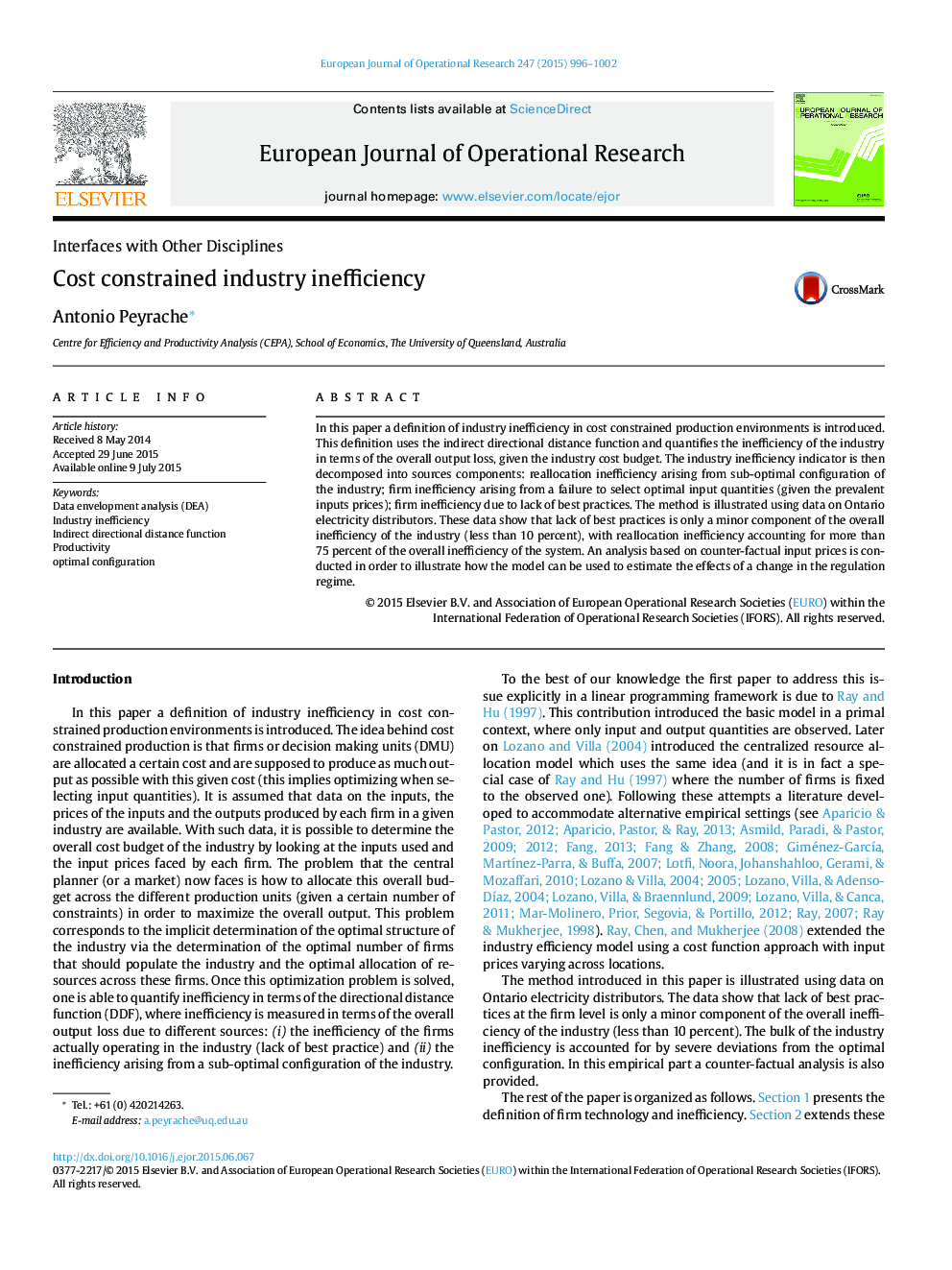| Article ID | Journal | Published Year | Pages | File Type |
|---|---|---|---|---|
| 477983 | European Journal of Operational Research | 2015 | 7 Pages |
•Industry inefficiency is defined for cost constrained production environments;•Industry prices are defined and the optimal industry configuration is determined;•The industry inefficiency indicator is decomposed into sources components;•An empirical application to Ontario energy data is presented;•The empirical application shows how to use the methodology in order to estimate the effect of changes in the regulation regime.
In this paper a definition of industry inefficiency in cost constrained production environments is introduced. This definition uses the indirect directional distance function and quantifies the inefficiency of the industry in terms of the overall output loss, given the industry cost budget. The industry inefficiency indicator is then decomposed into sources components: reallocation inefficiency arising from sub-optimal configuration of the industry; firm inefficiency arising from a failure to select optimal input quantities (given the prevalent inputs prices); firm inefficiency due to lack of best practices. The method is illustrated using data on Ontario electricity distributors. These data show that lack of best practices is only a minor component of the overall inefficiency of the industry (less than 10 percent), with reallocation inefficiency accounting for more than 75 percent of the overall inefficiency of the system. An analysis based on counter-factual input prices is conducted in order to illustrate how the model can be used to estimate the effects of a change in the regulation regime.
